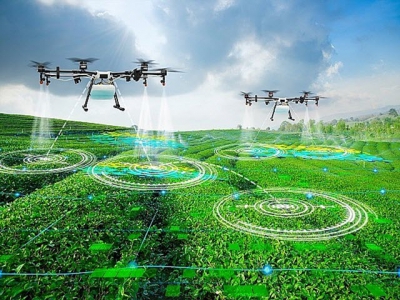Vietnamese agriculture 4.0 harbours great potential

With Vietnam striving to restructure its agricultural sector to make it more sustainable and attract more investment, Grahame Dixie, executive director of Grow Asia spoke to VIR about opportunities and challenges for Vietnam's agricultural sector in the era of Industry 4.0.
What potential do you see in Vietnam’s agricultural sector compared to others in the ASEAN region?
We are very excited by the potential of high-value products in Vietnam. Vietnam has many types of fruit such as durian, dragon fruit, and niche cocoas. These crops can provide much higher returns to farmers and Vietnam is well positioned to enhance these opportunities.
What opportunities do you see for foreign investors in conducting business and investment in Vietnam’s agricultural sector?
Well, we will build on the production foundations that Vietnam has already created. In particular, we will focus on value addition of existing aquaculture, animal, and crop products. In addition, we will move towards premium products and away from basic agricultural commodities.
Industry 4.0 is changing all sectors in all economies in the world, including in Vietnam. What challenges do you see Vietnam’s agriculture facing due to this development?
As labourers increasingly move off farms, technology will be needed to farm more efficiently. Some of these people will move to cities, but there is also a lot of potential in the agri-business sector.
I expect to see many new jobs emerge in the broader agricultural supply chains, for example in the provision of contract services (such as ploughing, mechanised harvesting, and agrochemical application), input supply, and especially agricultural processing and value addition.
This should be encouraged, both to support farmers and to ensure rural areas remain strong. Additionally, we would expect to see the emergence, in Vietnam, of a cadre of better, younger and more professional farmers, able to utilise the new technologies, and produce for the expanding and more discerning food markets regionally and globally.
Grow Asia is a multi-stakeholder partnership platform that enables collaboration and catalyses action in support of national and regional agriculture development priorities within the ASEAN. What has it done and will it do to support Vietnam’s agricultural sector?
Our value in Vietnam is bringing different actors together. From my experience in Grow Asia and across my career, I see that countries which perform especially well in agriculture have a forum where the public, private, and producers’ sectors can share knowledge, tackle problems, and agree on policy solutions together.
For example, the Partnership for Sustainable Agriculture in Vietnam (PSAV) was formed in May 2010. The partnership is comprised of over 60 partners from global and local companies, provincial governments, the national research institute, international organisations, and non-governmental organisations (NGOs).
Our aim is to see NGOs, farmer organisations, government, and business in Vietnam pulling in the same direction. After all, in many cases, they each want the same outcome.
Related news
 Vietnam to host its first World Rice Conference
Vietnam to host its first World Rice Conference At the conference, participants will compare notes on the short term expectation for the domestic and international rice trade
 India rice prices recover; low Thai rates dampen Vietnamese offers
India rice prices recover; low Thai rates dampen Vietnamese offers Rice export prices in India recovered this week after demand improved, while rates for the Vietnamese variety eased.
 Ninh Thuận to breed more sheep, goats for commercial production
Ninh Thuận to breed more sheep, goats for commercial production The south-central province of Ninh Thuận, the country’s largest animal producer, is strengthening measures to breed more sheep, goats, pigs and other animals